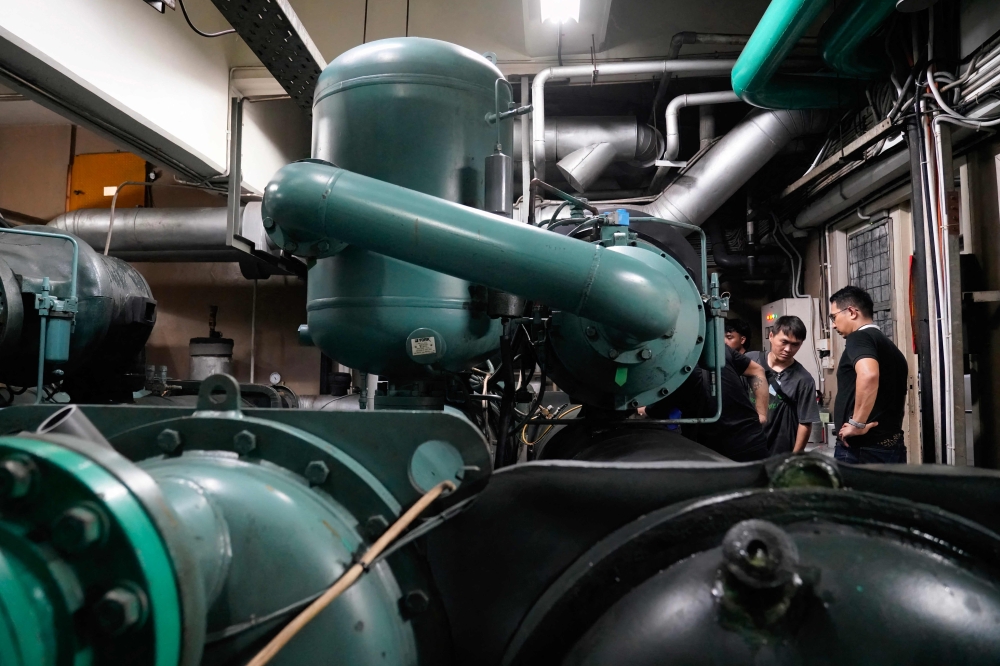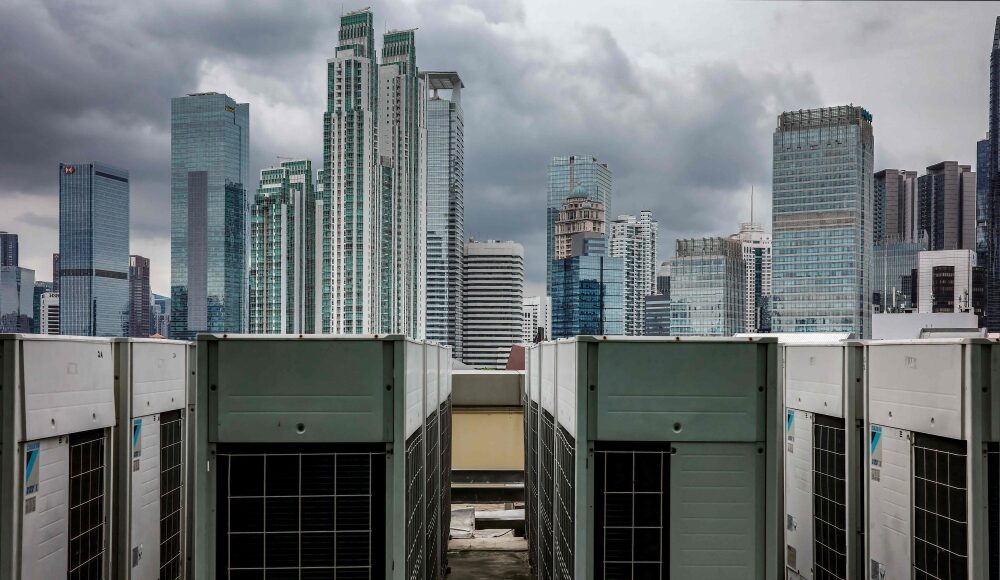JAKARTA, July 11 — In the basement of a housing complex in Indonesia’s capital, Ari Sobaruddin and his team are on a mission to help save the planet.
Armed with tools and sweat-soaked resolve, they spend 12-hour shifts capturing refrigerant gas leaking from air-conditioning units — a “super-pollutant” thousands of times more potent than carbon dioxide.
“I love it because it’s about preserving nature, saving nature,” the 30-year-old technician told AFP.
Ari works for Recoolit, a climate startup that began operations in Indonesia in 2021 to tackle what it sees as an under-acknowledged source of global warming: refrigerants.
These gases — used in ACs, fridges and vehicles — have long been linked to environmental damage.
Back in the 1970s, scientists found that chlorofluorocarbons (CFCs), a class of refrigerants, were destroying the ozone layer.
This photo taken on June 10, 2025 shows gauges as a team of technicians from climate startup Recoolit work to capture emissions from a large AC unit in the basement of a housing complex in Jakarta. — AFP pic
This led to an international agreement to phase them out starting in 1989.
Their replacements, such as hydrofluorocarbons (HFCs), are less damaging to the ozone layer — but remain potent greenhouse gases.
“And those are in AC units, in the form of refrigerant banks… everywhere in developing countries right now,” said Recoolit’s head of operations Yosaka Eka Putranta.
‘Growing problem’
Although international efforts are under way to phase out HFCs too, they are still widespread, especially in developing countries.
Demand for cooling is expected to rise as climate change drives temperatures higher and more people join the middle class.
“It is a growing problem because we need our indoor environments to be more resilient to climate change,” said Robyn Schofield, an atmospheric chemistry expert at the University of Melbourne.
According to the United Nations, HFCs could account for between 7 and 19 per cent of global greenhouse gas emissions by 2050.
Most refrigerant emissions happen during equipment maintenance or disposal, either by accident or deliberately.
In Indonesia, such venting is illegal — but enforcement remains weak.
“It’s odourless, we cannot trace it. (Capturing) it takes so much resources — the machine, the people,” said Recoolit’s senior business development manager Erik Cahyanta.
“So some people just release it.”

This photo taken on June 10, 2025 shows a team of technicians from climate startup Recoolit working to capture emissions from a large AC unit in the basement of a housing complex in Jakarta. — AFP pic
Recoolit trains and pays technicians to capture refrigerant, which is then sent to approved facilities to be destroyed.
Technicians earn 50,000 rupiah (about RM13) per kilogram of gas collected.
The company believes destruction is preferable to recycling or reuse, which may result in future leaks.
“Who’s going to guarantee that when the refrigerants are injected again… they are going to stay there without another venting?” said Yosaka.
Big tech backing
Recoolit finances its work by selling carbon credits — each priced at US$75 (RM319) — based on the amount of refrigerant it eliminates.
Critics of the carbon credit industry argue that “offsetting” gives polluters an excuse not to reduce emissions at source.
“This allows polluters to claim ‘carbon neutrality’ or ‘negating ongoing emissions’ without actually reducing their own emissions,” said Benja Faecks of Carbon Market Watch.
Recoolit insists its credits are credible, as they are tied to measurable and permanent destruction of pollutants.
The startup does not buy refrigerants at market rates, to avoid creating demand for new gas, and its system includes lab analysis in Malaysia to verify refrigerant content.
It also uses a methodology developed by Yale University’s Carbon Containment Lab and relies on destruction facilities that pass “trial burn” tests.
So far, refrigerant destruction remains a niche corner of the carbon market.
But Recoolit has caught the eye of a major player — Google.
Earlier this year, the US tech firm partnered with Recoolit and another company to prevent emissions equivalent to one million tonnes of carbon dioxide.
Google says it hopes to help Recoolit scale up and expand beyond Indonesia.
Some experts argue governments should simply enforce refrigerant capture through policy.
But Recoolit says it is filling a practical gap that won’t be solved by regulation alone.
And for climate scientist Schofield, that makes a real difference.
“As a climate action… it’s a very good one,” she said.
“I wish we had more of it.” — AFP





